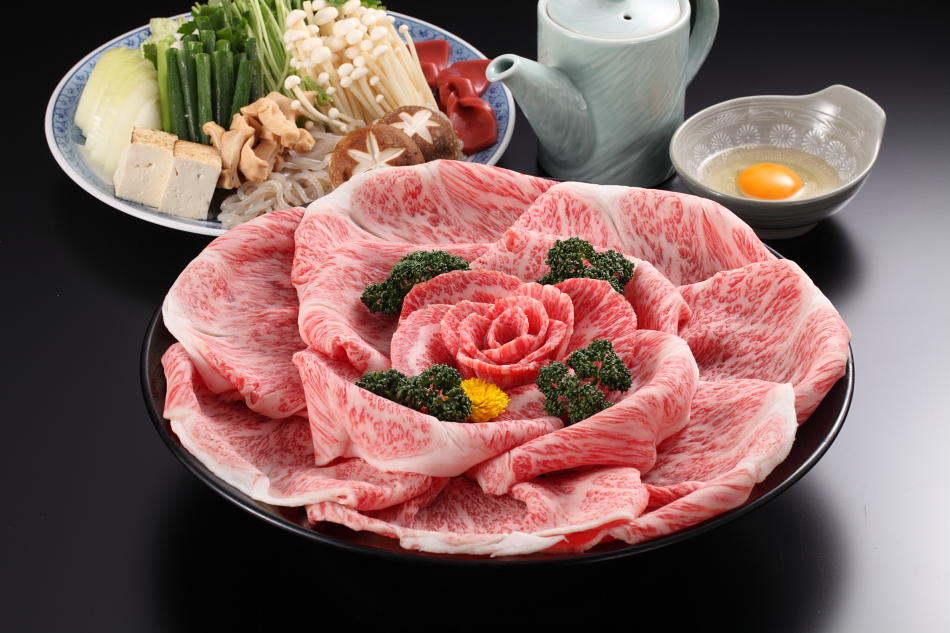Omi Ushi / Omi Gyu
| Registration Number | 56 |
|---|---|
| Name of the GI | Omi Ushi,Omi Gyu,OMI BEEF, Ōmi Beef,Omi Gyu,Ōmi Gyū |
| Class | Meat |
| Date of Protection | 2017/12/15 |
| Producing Area | Shiga Prefecture |
| Applicant - Name and Address | Shiga Prefecture Livestock Association 4-12-2 Takakaichōkita, Ōmihachiman City, Shiga Prefecture |
| Brand-site |
"Omi Beef" is one of the oldest beef brands in Japan, having a production history of about 400 years. Due to its contribution to the beef-eating culture of Japan and high fattening techniques, it is called one of the three major brands of wagyu beef in Japan.
"Omi Beef" is characterized by its meat quality having rich aroma and ease with which fat melts in the mouth. The background to this characteristics is that compared to Japanese Black cattle produced in other regions, "Omi beef" is richer in oleic acid (1).
"Omi Beef" is produced using Japanese Black.
The Japanese Black can be called "Omi Beef" only when it has spent the longest part of their feeding period in Shiga Prefecture and Shiga is the final feeding place. Producers follow the "Omi Beef Feeding Control Manual" and raise their cattle without stressing them. Further, during and after the middle fattening period, rice straw is fed as the main fodder ingredient.
During the Edo period (2), Omi was a strategic point for protecting Edo from daimyos in the western region of Japan. The Hikone Domain (3), or the ruling domain of Omi, kept a large number of samurais and needed large quantities of cowhides to make their battle-gear. Moreover, although eating beef was prohibited during Edo period, the Hikone Domain was exceptionally allowed to produce beef in order to present it for medicinal purposes to the Tokugawa Shogun family. Thus, in Omi, cattle fattening was deliberately conducted.
Omi is home to Lake Biwa, the largest lake in Japan, and is blessed with abundant water resources. As rice cultivation has been actively conducted since early times, people have fed plentiful rice straw to their cattle as fodder. This is the background to today's production of beef having high oleic acid content.
In Shiga Prefecture, cattle fattening has been promoted since the Taisho/early Showa periods, contributing to the formation of the basic cattle fattening techniques in Japan.
In 1951, "Omi Beef Association" was founded as the first association for promoting branded beef in Japan. Shiga Prefecture is thus one of the pioneering areas of wagyu production in Japan.
- Oleic acid: A type of unsaturated fatty acid. Among unsaturated fatty acid, it is comparatively resistant to oxidization. With a melting point of a low 16.3°C, it melts easily. It is also said to influence the flavor of meat.
- Edo period: 1603 ~ 1867. A period in the history of Japan, when the shogunate was based in Edo (present-day Tokyo). From the time of the first shogun, Tokugawa Ieyasu, the Tokugawa family was center of the feudal system of the shogunate and domains.
- Hikone Domain: Omi corresponds present-day Shiga Prefecture. Feudal lords (daimyos) who were against Tokugawa up to just before the establishment of Edo shogunate were located in remote areas (Kyushu and Chugoku regions). The Ii family was in charge of defenses as the head of the Hikone Domain.


